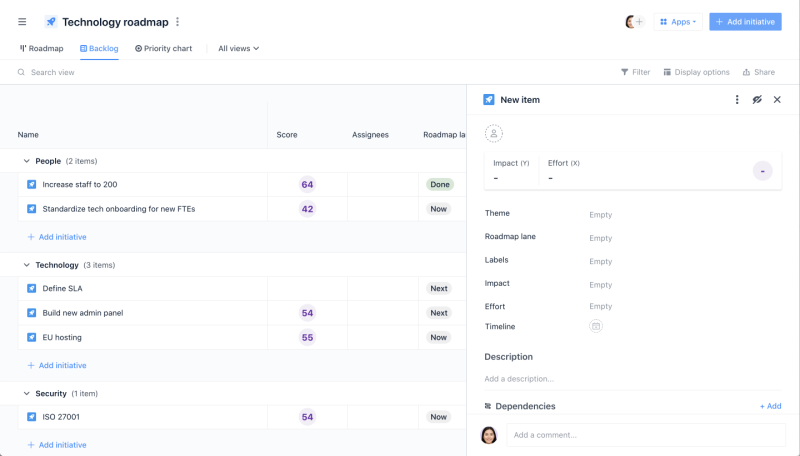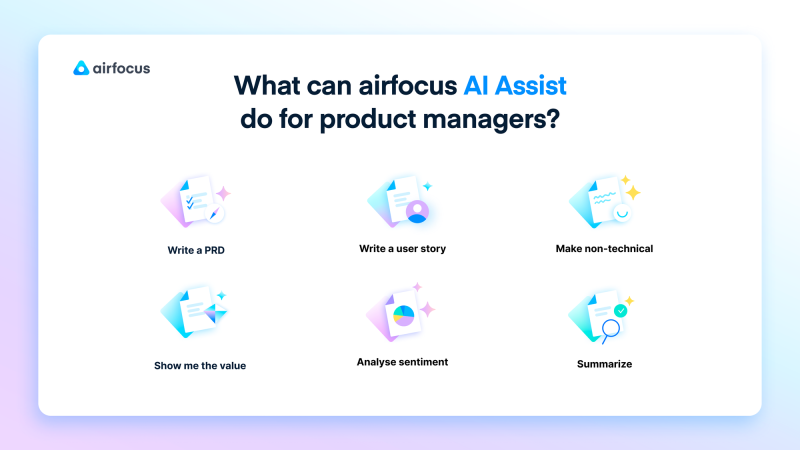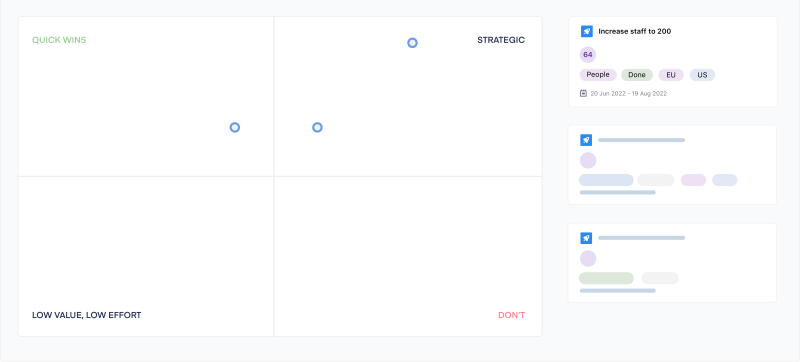
As the technology landscape changes, businesses continue to compete, and innovation continues, business leaders must ensure that their technology and tools evolve to meet challenges and opportunities head-on.
This is where the technology roadmap plays a pivotal role.
If you’re interested in creating a technology roadmap or just want to learn more about this topic then keep reading. In this article we’re going to discuss:
What is a technology roadmap?
Steps to crafting a technology roadmap
Best practices when crafting and implementing a roadmap
Using the right tools for the job
.. and much more

Roadmap 101
A roadmap is a tool that outlines the strategic objectives of a business and how they plan to evolve its offerings to reach set goals.
There are many benefits that roadmaps provide to teams and companies as a whole, these include:
1. Aligning your team
Roadmaps are great for aligning your team on the mission, goals, and key technology deliverables for the year. This is especially the case if you followed best practices and received their input before finalizing it.
2. Positioning your tech product(s) and company
A technology roadmap clarifies what changes will be made to your overall technological infrastructure as you position your product(s) and company for the future.
Positioning is all about clarifying how you compete in the market and differentiate yourself from competitors.
3. Planning resources
Once roadmap initiatives are defined, they can assist with steering discussions around projects and resources.
If an initiative is suggested during the quarter then with the aid of the roadmap the discussion will be rightly centered around whether to modify resources to focus on this initiative or deprioritize it and stick to the roadmap.
4. Internal communication tool
Roadmaps are great tools for internal communication because, with tools like airfocus, they can easily be shared with stakeholders.
Rather than jumping on a call with each member of your customer success team to walk them through the roadmap, simply share a link to the roadmap with the entire team.
If you decide to share your technology roadmap externally, with investors, for example, they can easily access it and view the content as needed.

What is a technology roadmap?
Also known as the IT Roadmap, the technology roadmap outlines a business's strategy for its software and technology.
It can include a variety of information including, but not limited to:
Software updates
Infrastructure rollouts
Sunsetting old infrastructure
Migrating data
Disaster recovery plans
Security improvements
Compliance reviews
Release dates
and more
Technology roadmaps are also useful for supporting market-facing products & strategic objectives of the business, especially as your IT team works closely with business departments to support their efficiency and maximize business value.

Along with communicating to your internal team how your company’s software and technology will evolve, it also assists your team with making the right decisions and tradeoffs related to your technology infrastructure.
There are various kinds of technology roadmaps such as: architecture roadmap, DevOps roadmap, infrastructure roadmap, and more.
Having a specified roadmap for the various departments of your engineering team is beneficial for organization and collaboration.
You might be wondering why items such as deprecating old infrastructure or systems, and compliance reviews would be placed on this roadmap. This is because a technology roadmap is meant to align stakeholders on a specific course of action to either maintain and improve existing technology or adopt new ones.
As Agile increases in popularity so does the importance of technology roadmaps. This is due to the increasing need for technology teams to be Agile as they manage their internal IT landscape as a product, not solely as an internal service for example.
In fact, Gartner predicts that “by 2023, approximately 40% of large enterprises will manage internal business capabilities as products to drive continuous innovation and competitive advantage.” For more on this topic check out our detailed guide on Internal Product Management in Digital Transformation.
Crafting a technology roadmap
Here are 5 specific steps that should be followed to craft a well-defined technology roadmap.
1. Define goals
Technology is meant to support a business, its products, and teams. Due to this a technology roadmap is not created in a silo from company or departmental goals.
Start by understanding the key goals that need to be accomplished for the company, departments, specific products, and why. This along with the expected value, effort, and feedback, will determine the initiatives that will make it onto a product roadmap.
This is where prioritization comes in and why it’s imperative to build this roadmap as a cross-functional activity with input from other teams.

2. Assess current and future trends
Always keep a pulse on your market and emerging new technology.
As we write this article ChatGPT (Artificial Intelligence) is an emerging innovator in the software industry.
Microsoft has kept a close eye on this space, is furthering its investments, and is modifying their technology to take advantage of this opportunity.
They have integrated ChatGPT into Bing as they position themselves to take on Google to directly compete in the search space. They accomplished this by keeping their pulse on the market and modifying their technology accordingly.
airfocus is another example of keeping pulse on the market. By introducing AI Assist, airfocus was able to provide product managers with an embedded AI inside its platform that is customized for product managers' needs. With a simple slash command, PMs can draft ideas, write product briefs and analyze sentiment; all while saving a great amount of time.

3. Gather stakeholder input
The technology roadmap should be crafted with input from multiple stakeholders, internal and external.
Internal are those in your company, for example your software engineers. External stakeholders may include technology partners that you work with.
Stakeholders regularly provide feedback throughout the product lifecycle on areas of improvement. Also expect feedback from members of your engineering team on how to improve your technology infrastructure.
Ensure that you have one central location store feedback as this list will be revisited to determine what to prioritize next.
While stakeholders can share their thoughts, with limited resources and varying opinions there must be one person, or group, who makes the final decision on what makes it onto the roadmap and what gets deprioritized.
Product and engineering leadership must work together to make this decision among competing priorities.
4. Craft the roadmap
The template you use will be based on the type of technology roadmap you need, your audience, and collaborators.
Also consider if it is for internal or external use. And if internal, if there are cross-functional collaborators.
This information determines the amount and type of information that will be shared on the roadmap, and also assists with supporting its maintenance.
Your technology roadmap will have projects/initiatives, dates, and owners.
Members of the engineering team will have access to it as they collaborate with one another to implement the items and communicate with other teams.
Broad timelines are beneficial for this roadmap as internal stakeholders will want to know when these items will be released, especially if there are dependencies that need to be kept in mind.
There is no standard one view to use for a technology roadmap. You can use a timeline view, item, board view, or even a chart view. It depends on the type and what you need to communicate.
The good news is that you don’t need to create this roadmap from scratch. airfocus comes with multiple out-of-the-box roadmap templates. There’s even a technology roadmap template that you can get started with.
All templates are fully customizable and built on proven roadmapping methods so that you can adapt them to your team(s) specific needs.

5. Implement and monitor progress
The roadmap is meant to communicate what will be worked on in a given time period to reach company goals. The details of how these items will work will be recorded elsewhere, for example in a tool like JIRA.
Progress should be communicated as your team implements the work and the roadmap should be regularly reviewed and updated.
One important thing to note is that a technology roadmap is not a static document that is set in stone once created.
If items on the roadmap are deprioritized or new items are added then make sure to update the roadmap and inform your key stakeholders so that they are aware. Especially since cross-functional team members may have work or items to complete based on this work.
And there you have it, 5 easy steps to craft a well-defined technology roadmap.
Technology roadmap examples and use cases
As mentioned earlier, technology roadmaps can be used for many use cases, including sharing software updates, release dates, data migration plans, and security updates, and more.
A good example of a technology roadmap is Microsoft’s 365 roadmap, where customers can get the latest updates on their best-in-class productivity apps and intelligent cloud services. Visitors can find details of new features, software releases, as well as security updates.
Though they include multiple products on this roadmap, the filter and search functionality make it easy to find the specific product or service you are looking for.
They even went the extra mile of letting customers know which specific phase of the software development process the item is in (information generally kept internally), when it was previewed, and the expected release date.
GitHub also has a public technology roadmap for its customers.
It includes security updates, server updates, API updates and more. Following best practices they placed the items into themes for easy understanding and navigation.It serves as a great resource for those who rely on their services for their software delivery process.
While GitHub used its own tool to craft this roadmap, other companies use tools like airfocus to craft, share, and update their roadmap.
Conclusion
New shiny features are important and provide value for customers, however understanding how technology will evolve to continue supporting product and company goals is critical.
This is why it is imperative to have a technology roadmap in place which clarifies how your technology will evolve and changes you will make to align with business and product goals and take advantage of market opportunities and innovations.
We hope that through this guide you have more clarity on the importance and benefit of technology roadmaps and how to craft them.
Get started on your technology roadmap today with airfocus.

Quadri Oshibotu

Read also



Build great roadmaps

Experience the new way of doing product management




